by Kristin Arzt
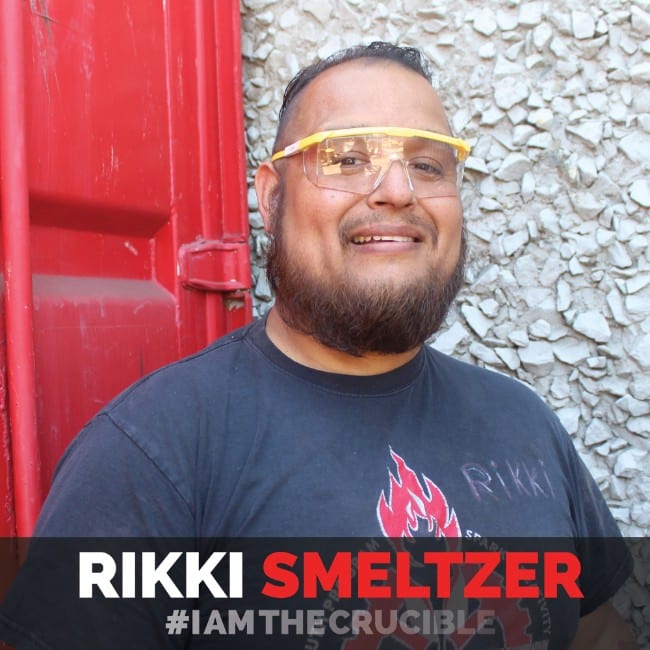
Rikki is truly a jack of all trades. He has worked as a chef, cleaned houses, and worked construction. At The Crucible, he has found a creative home as co-Department Head of our Jewelry Department. In addition to Jewelry, he also teaches Glass Flameworking, Ceramics, Leather Working, Book Binding, and more! Last year, he taught more classes than any other instructor at The Crucible – with 103 classes under his belt. For Rikki, his Native American roots encouraged a creative upbringing, which he works to carry through to his teachings at The Crucible.
Where did you grow up?
For the first twelve years of my life, my family moved every year. When you’re moving around a lot it’s hard to be a part of the tribe. When I finally settled in Lawton, Oklahoma, I was able to be a part of the tribe again. There were people from all over the world there, and the city had huge festival every year showcasing all of the different cultures. In Oklahoma, I was exposed to all lot of cultures and food, and that’s how I got into cooking. So while in high school, I went to vocational technical cooking school, and got a job right after I finished.
How did you end up at The Crucible from Oklahoma?
My metalsmithing teacher and two of my college classmates told me about The Crucible. So before I even moved here, I got online and signed up to volunteer. After unpacking my moving truck, The Crucible was my first stop in Oakland. And since that day in 2011, I try to be here as much as I can.
Do you remember your first volunteer job?
Yeah – it was scary! I’m not afraid of heights, but I am afraid of the sudden stop and fall. I was on a cherry picker, and I had to tack a tarp to the ceiling to collect water from a leak. Needless to say, I survived that first shift. Then, I started teaching youth, adult classes, and team builds. Now, I’m co-department head!
You teach so many different classes! Do you have a favorite?
I love teaching youth classes! Especially Youth Kandi Cuff and Pearlers. It is an adaptation on raver jewelry and the beadwork that I grew up doing being Native American. Now, I see the raver jewelry out in the world, and it looks just like what I made when I was a kid. To me, it is how appropriation should be. It’s okay to take the technique, but allow the culture to have its own meaning.
How do you receive support from The Crucible community?
I don’t ask too much from the community here, because really all we can give each other is support. I cannot even begin to describe the level of knowledge that exists here. There are so many incredible teachers. Like Hiroki Fukushima! I can only dream about owning something he has made. His work is in museums, and he’s teaching here – I’m starstruck!
What is a favorite project you have worked on?
I like adding beauty to seemingly mundane, everyday things. I am trying to make everything in my house, rather than buy it in a store. In my bathroom, I made the shower hooks in our smithy and I made the tiles for my shower in our Ceramics studio.
What is one word you would use to describe The Crucible?
Inclusive. The youngest age of our students is 8, and the oldest is “Can you handle yourself here?” You can be 110. It is very Native American to be inclusive, and it really ties back to my childhood roots, and the roots I have here in Oakland.
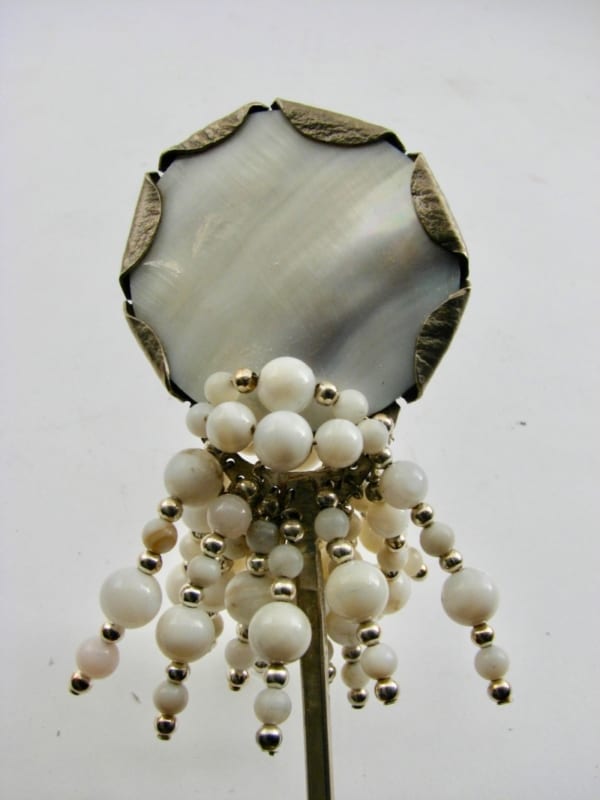
“Mother Moon,” hair brooch. Inspired by stories that Rikki’s grandmother would tell him about the moon. She told him that as the sun sets, the moon is more powerful, dominant, and feminine. “That’s the kind of home I was raised in,” Rikki told us.
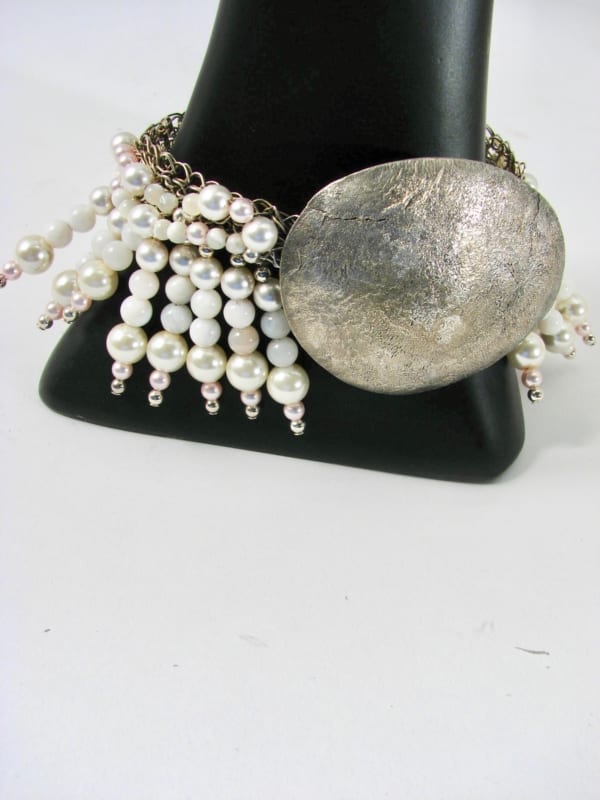
“Mother moon,” anklet. Rikki shared that the pearls represent the children weighing down the mother, but the relationship is so beautiful and well worth the weight.
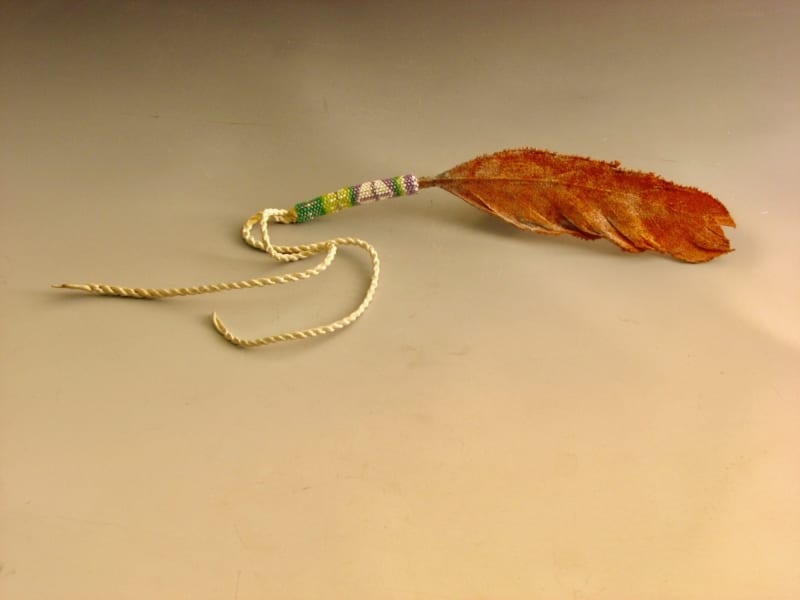
“Prayer Feather”
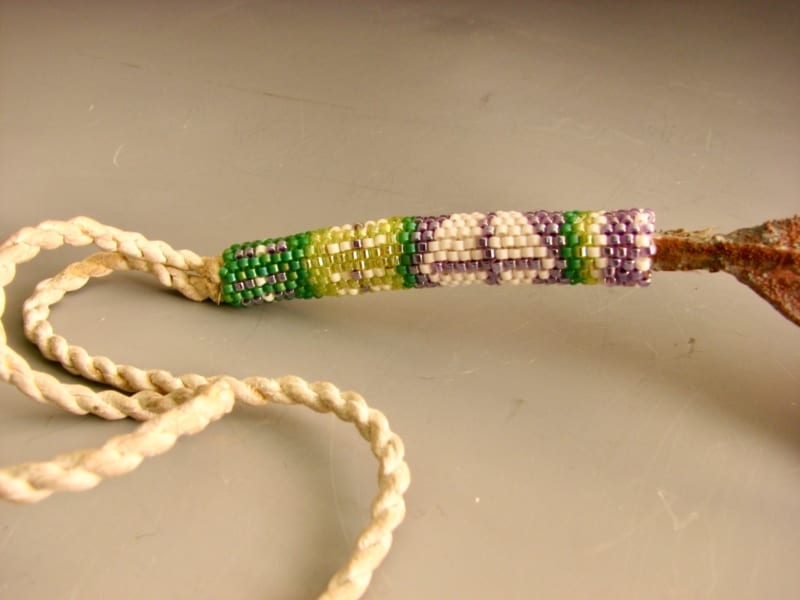
“Prayer Feather,” Beadwork detail





